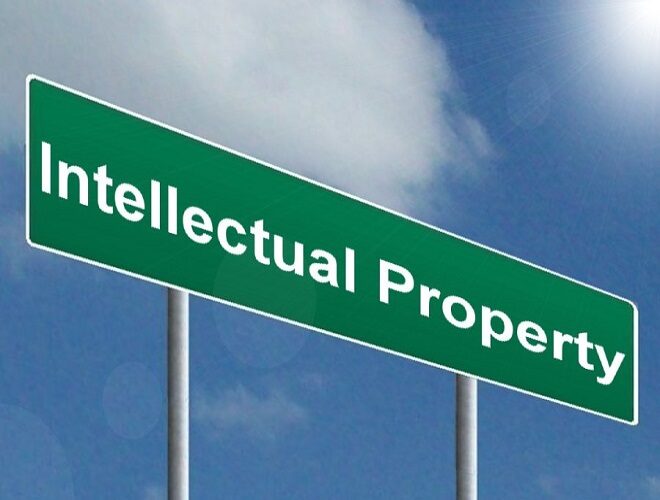What is Domain Name?
In simple terms a domain name is the address of a website over the internet. It’s similar to the name of our house in the real world. We all know that the computer understands only the language of the Bits, i.e. of the numbers. Therefore, even the address of a website is also essentially a series of numbers and called as the ip address. Computer science has evolved with the development of coding languages that are human understandable. In fact, these days it’s also possible to execute many of the computing activities without even knowing the coding languages. In the same way, the numeric IP Addresses also transformed from numbers to human languages and predominantly most of these names are in English. Moreover, the said domain name must be unique such that the computers can identify each other in the vast digital jungle. ICANN[1] (The Internet Corporation for Assigned Names and Numbers) is the entity that coordinates these unique identifiers across the world. If we eliminate the coordination done by the ICANN, there won’t be the internet. Some of the popular examples of domain names are: Amazon.in; flipkart.com, etc.

Why the domain names are important?
Domain name is the identity of an entity over the internet, in the virtual world. That with the fascinating evolution of the Information Technology, every aspect of the human existence from social life, commerce, books, tv, restaurants, hotels, car rentals and even Government functions have gone online and with these changes the human life has literally transformed. Today, especially due the pandemic we all have spent almost last complete year in our houses, we could sustain this phase thanks to the Information Technology and unprecedented growth of the internet. In India, another thing has changed, i.e. digitization of money and overwhelming growth of the online fund transfers! Today, our local grocery store or the “Paanipoori” store happily accepts the digital payment using the funds transfer APPs – such as Google Pay or Phone Pay. Therefore, as IT in today’s world has become core to the very human existence, it becomes very important for the businesses to ensure that they operating in the Digital World and uniqueness of their brand identities are well protected. Domain Name is the first identification mark of a business in the virtual world it acts just like the trade name our trademark of the physical world. That, any lapse in protecting the identity of the brand through the domain names, may result in potential business loss due to the impersonation of the Trade Name by the entities with illegitimate interests and bad faith. On the other hand, some of the larger business entities would try to create the exclusivity across the Trade segments by suppressing the smaller entities. Therefore, irrespective whether an entity is big or small, it needs to give a careful consideration to the domain names.
What are different types of the domain names?
In this day and age, we shop on the online megastores such as Amazon.in, we consume news from the portals of timesofindia.com, opindia.in or bbc.co.uk. Similarly, we consume entertainment through youtube.com, or REDDIT.TV. The government services and updates can be accessed from the websites of various government sites such as ipindiaonline.gov.in or nasa.gov. You must have noticed in the above-mentioned examples of the domain names, that it contains various extensions, that is the part of domain name after the “.” These extensions of the websites can be classified in various categories of top generic Top-Level Domain (gTLD) names, country code Top Level Domain (ccTLDs) names and new Top-Level Domain names. The examples of the gTLDs are “.com”, “.org”, “.edu” etc. Whereas, the country code top level domain names are two letter domain extensions, these extensions are assigned for a country, geographic location or territory such as “.IN”,”. JP, “.UK”, etc.




With the advancement of the time, growth and the technology, several new top-level domain names were introduced mainly towards the brands, organizations and this service is offered by various entities. These new top-level domain names adds extra character and identification for the business entities and provide more freedom to customize their domain names with high degree of flexibility and relevance for their service or product offerings some of the examples of these new TLDs “.app”, “.tv”, “.io” etc.
Domain names, goodwill and intellectual property/ Are the domain names a type of the intellectual property? If yes, how? how can we calculate goodwill? understanding goodwill v. intagible assets (domain name)?
Names, more so brand names are the identification marks for a business, they are the brand names. Among many things the brand names are the expression of the personality, quality and character of the product and/or services of the brand itself. That, like that with individual names and surnames, with the passage of time, the brand names create a good will, brand equity and establish itself as a unique and distinguishable feature. Therefore, the domain name in the virtual world is an expression of the product and services offered by a brand in the real world and hence the domain names are the identifier and carrier of the goodwill of the brand in the virtual world.
Moreover, names are the creation of the mind and intellect, and hence are classified as intellectual property.
The goodwill of a business is the whole advantage of the reputation and connection with customers together with the circumstances, whether of habit or otherwise, which tend to make that connection permanent. It represents in connection with any business or business product the value of the attraction to the customers which the name and reputation possess.[1]
[1] Gov.uk. “HMRC internal manualCapital Gains Manual.” https://www.gov.uk/hmrc-internal-manuals/capital-gains-manual/cg68010
Now this brings us to the question of the is there any similarity between the Trademarks and Domain Names?


In fact, with the evolution of the intellectual property law the protection to the Tradenames has developed in the form of Trademarks. There is a long history off evolution of law related to the trademarks in India and across the globe, since the evaluation of trademark law is not the subject of the current discussion, we will not dive into it, will only touch base the relevant portions of that law related to the Domain Names. That, in the modern Trademark enactments, such as Indian Trademarks Act 1999, both the tradenames and symbols. That if we consider domain names as the identifier of a brand or a business in the world of Internet and web sites then the domain names are identical to that of the Tradenames. Therefore, when a question of genuineness over the ownership of a domain name occurs, registration of the Trademarks is an expression of the legitimate interest over the said name and it is a powerful right that helps the registrant. Therefore, the law of trademark plays a vital role in determining the ownership over the web domain. However, it is also important to understand that there are other critical elements along with the registration of trademarks that help in determining the legitimate interest over a web domain name.
In order to obtain the protection of the Trademark in case of domain names, whether the TM classes play any role?
It is very important to understand the TM classes, as they define the area of business operations, and like that of the Trade Mark disputes, in the context of the domain names, registration against the applicable classes iscrucial to determine the extent of the protection. It may very well be possible that several businesses legitimately use similar tradenames/business domains across the different categories or if the classification is itself broad, then within the same class of the product and services classes. The fourth schedule to the Trademarks rules defines these classes across the product and service categories[1]. That the Hon’ble Supreme Court of India in the judgement Nandhini[2] has very rightly observed that the Trademark protection shall not create Monopoly over all or the entire class of the Trademark upon registration. That as per the classification of the Trademarks, there are 34 product classes, whereas 11 are the service classes. A Trademark applicant can apply for the registration in one or more Trademark classes depending on its product and service offering.
Similarly, the nature of the mark, i.e. the name of the mark can make a mark as a weak mark, or an abstract or a strong mark. The same characteristic of the Trademark is also applicable in the case of domain names. The weaker, common names don’t get the protection even in the case of domain names.
How are the Domain Names protected in the borderless Digital World?

With the breakthrough developments in the 21st century over the last two decades, we have seen massive disruption in the industrial world. The territorial boundaries of the nation states have been breached with the advancement of information technology. The modern communication networks have truly made the world interconnected and interdependent like never before. The said interconnection and interdependence at one end have empowered the global economy and workforce, while at the other end it has made the world susceptible to the treats from bad elements across the globe. Therefore, at one end one can sense the opportunities presented by a huge global marketplace, at the other hand it has created a new set of legal challenges for safe and secure business transactions.
Typically, Intellectual Property rights territorial rights, limited to the territory of the registration. However, and with the advent of the technology and especially that of the internet, a domain name can be accessed from any corner of the world irrespective of the jurisdiction of its origin. Hence, the digital world is beyond any geographical boundaries and poses additional challenges. However, international boundaries and protection of the Trade names across the borders has always been the critical component that was responsible for the development of the IP Law across the globe.
That as mentioned above, the international co-operation in the space of the Intellectual Property goes back to the 1883 with Paris convention followed by 1886 Berne Convention, 1891 Madrid Agreement, formation of BIRPI, the French acronym of United International Bureaux for the Protection of Intellectual Property in the year 1893. In the year 1970 a new International Organization the World Intellectual Property Organization (WIPO) was established under the Convention transforming an erstwhile BIRPI into WIPO. In 1974 WIPO joined the UN. That among many goals of the WIPO was to establish a Robust mechanism for quick and easy disposal of disputes related to intellectual property in the modern interconnected world. In order to fulfill the said objective in the year 1994 WIPO Arbitration and Mediation Center (AMC) was established. The Arbitral awards passed by the said WIPO – AMC are enforced as per mechanism of the Arbitration and Conciliation Act, 1996, paving a way for the effective dispute resolution in the Intellectual Property space.
The sky was cloudless and of a deep dark blue.
In order to resolve the disputes around the domain names, the WIPO – AMC (Arbitration and Mediation Center) provides time- and cost-effective mechanisms through online Arbitration proceedings. That the Arbitration proceedings are based on Uniform Domain Name Dispute Resolution Policy (UDRP)[1], which is very elaborate and covers various crucial aspects of the domain name dispute. That the WIPO-UDRP has wide and exhaustive jurisprudence spanned over 50,000 decided cases. That all the WIPO Arbitral awards are available for the public view and WIPO has published a detailed guide in form of WIPO UDRP overview from time to time, its latest version being WIPO Jurisprudential Overview 3.0[2]. That the WIPO – UDRP Arbitration tribunal has jurisdiction to decide the domain name disputes related to the generic Top-Level Domain Names .aero, .asia, .biz, .cat, .com, .coop, .info, .jobs, .mobi, .museum, .name, .net, .org, .pro, .tel and travel. The UDRP also applies to all New gTLDs.[3] In addition to the above, the WIPO-AMC also provides domain name dispute resolution services for 76 country code Top-Level Domains (ccTLDs).[4] That, a complainant can be made by a complainant against the respondent who has registered a domain name in bad faith, which is identical or confusingly similar to the domain name of the complainant. That in order for a complainant to succeed, it has to satisfy three elements, as prescribed in para 4(a) of the UDRP, the same has been reproduced as below:
- the respondent’s domain name is identical or confusingly similar to a trademark or service mark in which the complainant has rights; and
- the respondent has no rights or legitimate interests in respect of the domain name; and
- the respondent’s domain name has been registered and is being used in bad faith
